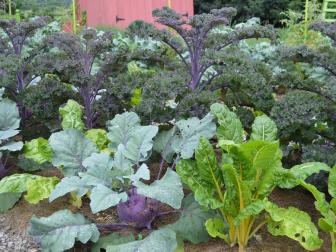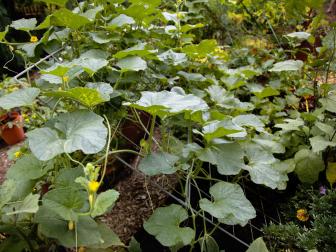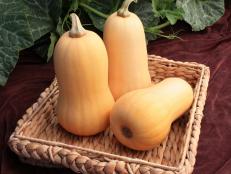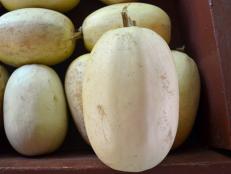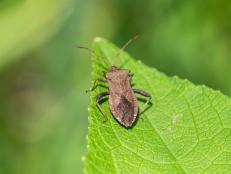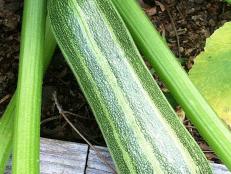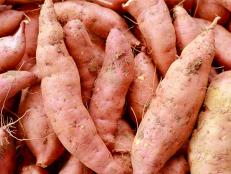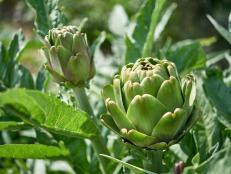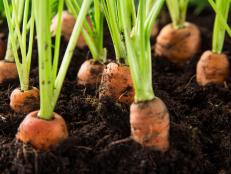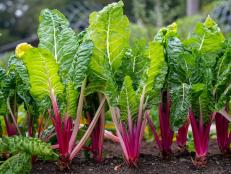Types of Winter Squash
Raise your culinary sights by growing different types of winter squash. These nutritious vegetables boast delicious flavor.
Acorn, butternut, cushaw, delicata — work at it long enough, and you can almost build an alphabet using the different types of winter squash. This versatile vegetable comes in a variety of shapes and sizes, colors and flavors. That’s one reason why they’re becoming more commonplace: because they make spectacular additions to autumn décor. A striped delicata, a blue hubbard, a two-tone turban—these winter squash deserve top billing based on looks alone.
![Homegrown variety of winter squash. Homegrown winter squash. 195956_3603429601142_787136137_n[2].jpg](http://hgtvhome.sndimg.com/content/dam/images/grdn/fullset/2014/2/7/0/195956-3603429601142-787136137-n-2.jpg.rend.hgtvcom.616.822.suffix/1452646912247.jpeg)
Winter Squash is a Super Food
But the different types of winter squash possess beauty that’s more than skin deep. These pumpkin cousins are nutritional powerhouses, easily earning a spot on any healthiest foods list. They’re packed with carotenoids, a type of disease- and inflammation-fighting antioxidant. Winter squash also contain a type of carbohydrate that is anti-inflammatory, antioxidant, anti-diabetic and insulin-regulating. Seeds are jammed with good-for-you fats, serving up a healthy crunch.
Winter Squash Has a Long Shelf Life
Nutritional content aside, there’s another reason to grow one of the many different types of winter squash: These squash store for weeks and even months, which means you can savor garden-fresh, homegrown vegetables well into winter with zero time investment in food preservation. The term “winter squash” refers to when this squash is stored and eaten, not to when it’s grown or harvested. Proper curing and storing is the secret to fabulous flavor in winter squashes.
Growing Winter Vegetables
Save money and grow food even when it's cold outside by growing your own fresh crop of winter veggies.
3 Most Common Species of Winter Squash
Three species account for the majority of the different types of winter squash grown in the United States. Curcubita pepo includes most of the small and medium size traditional pumpkins drafted for Halloween and autumn decor. Some varieties offer excellent flavors and are ready after only seven to 14 days of curing.
Examples of C. pepo winter squash include acorn squash, delicata, and many high-sugar content pumpkins, such as ‘New England Pie’, ‘Baby Pam’ and ‘Small Sugar’. C. pepo winter squash are not typically good for long-term storage. Eat these squash first, before starting on the other types.
Curcurbita moschata winter squash includes butternut, cheese pumpkins (they resemble wheels of cheese) and cushaws. These winter squash feature richly-colored flesh (most often bright orange) that’s high in sugars, dense and less stringy. That denser quality makes it a go-to choice for soups, stews and pumpkin-type pies. These squash need seven to 14 days of curing and store from weeks to months.
The Curcurbita maxima group contains the champions of winter squash storage. Some of these squash don’t even develop their full sweetness and flavor intensity until six months into storage. These winter squash include giant pumpkins, which really aren’t of good eating quality, along with hubbards, turbans, ‘Buttercup’ and ‘Marina di Chioggia’.
Tips on Curing Winter Squash
Tackle curing and storing different types of winter squash just like storing pumpkins. The C. moschata and C. maxima types of winter squash happily store in a cold room or basement for weeks to months. During storage, starches in the flesh convert to sugars, enhancing sweetness and flavor complexity.
In general, eat C. pepo types before C. moschata, and save C. maxima types for last. But definitely research the winter squash you grow to discover ideal storage times. Also, check stored winter squash regularly for signs of rot to ensure your harvest winds up on your dinner plate and not in the compost pile.
Companion Planting for Summer and Winter Squash
For as many squash varieties as there are to grow, there are just as many problems that plague squash plants. Learn companion planting techniques to protect your precious squash.







